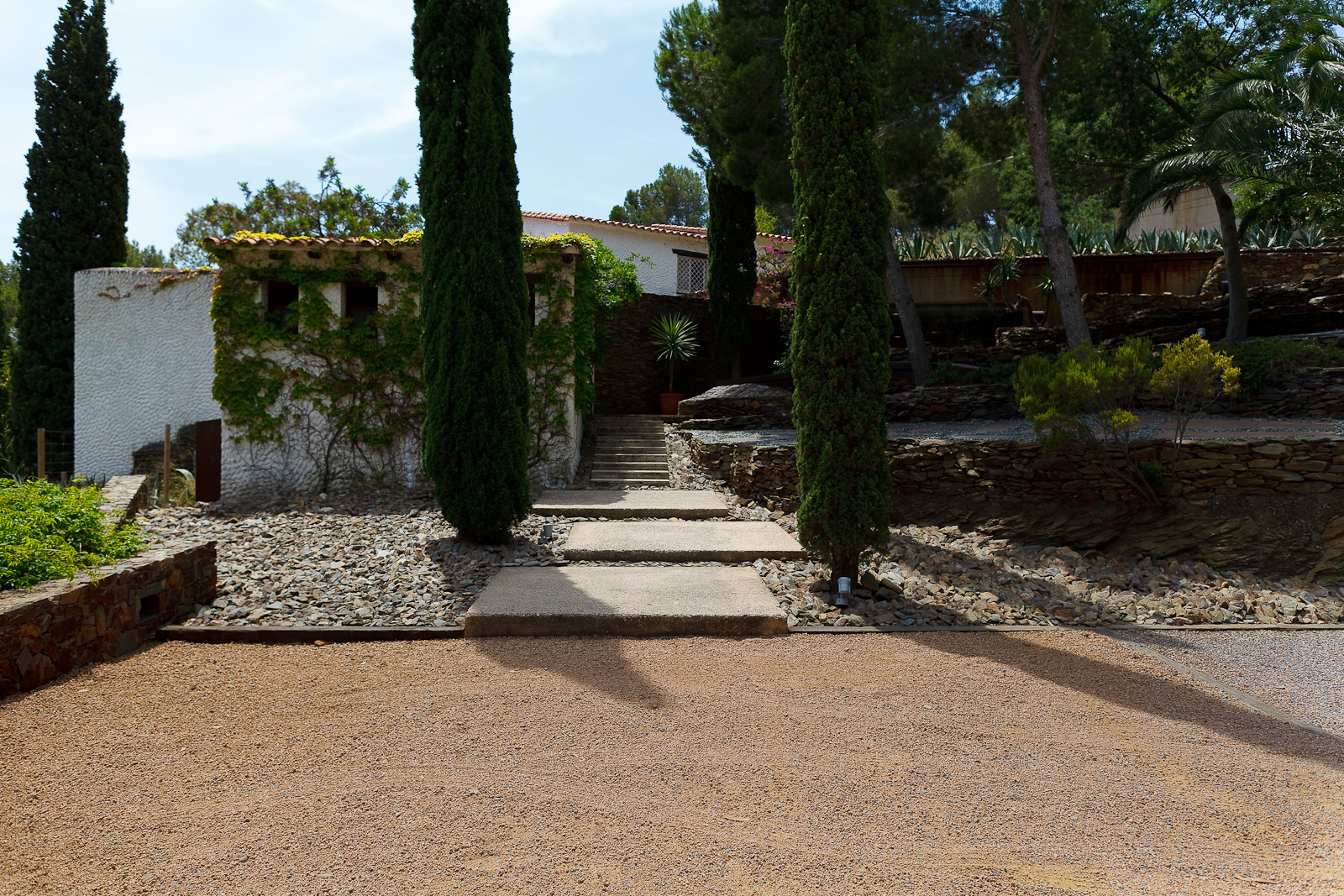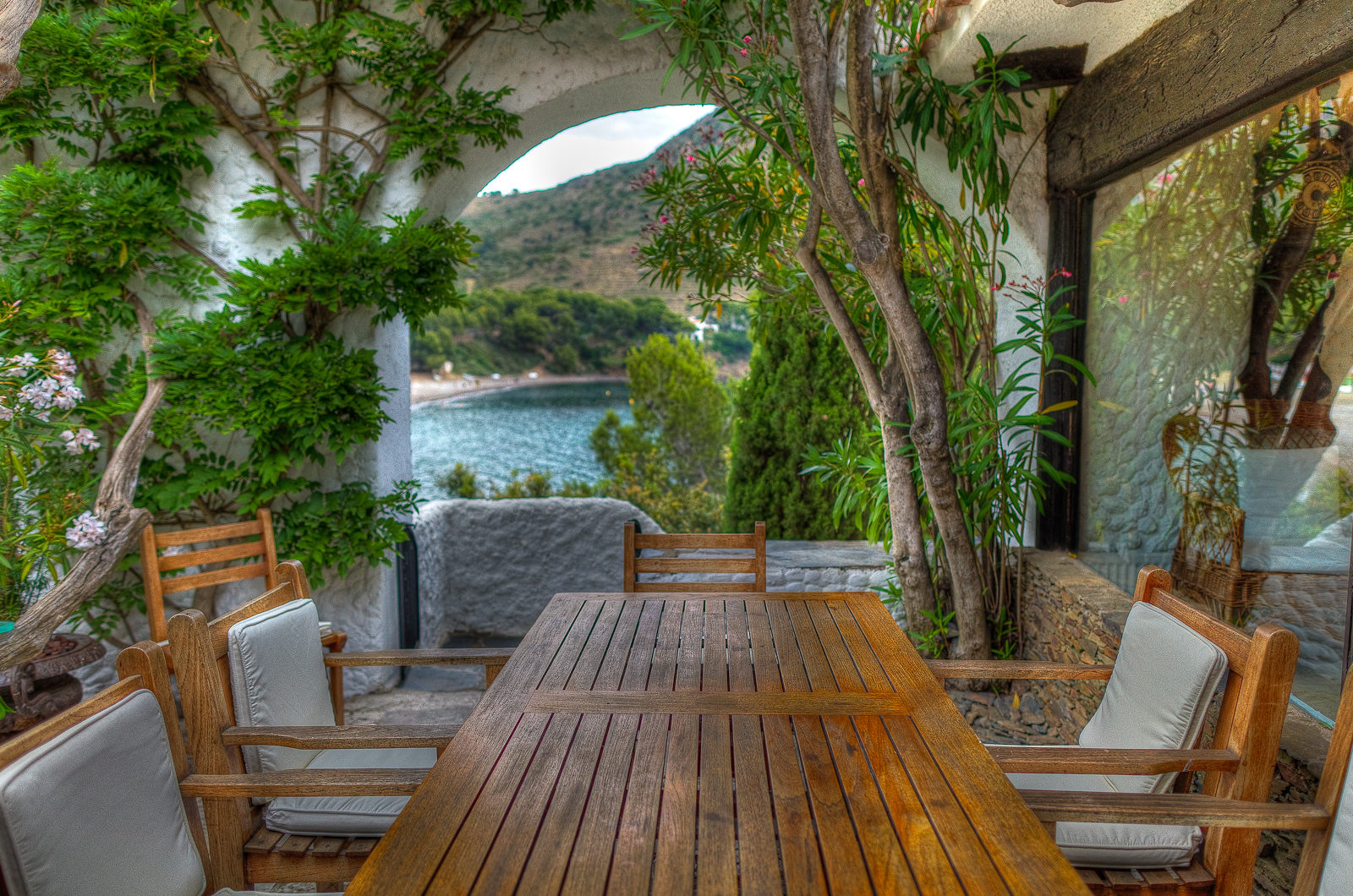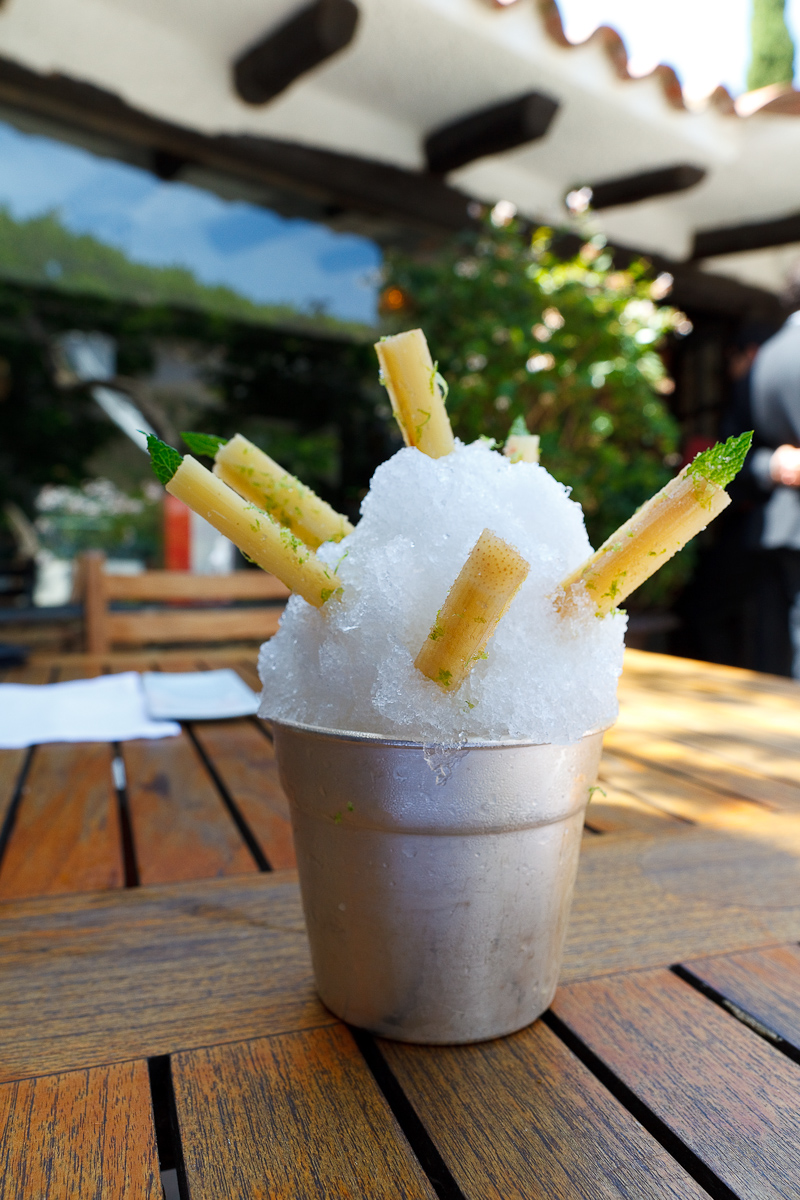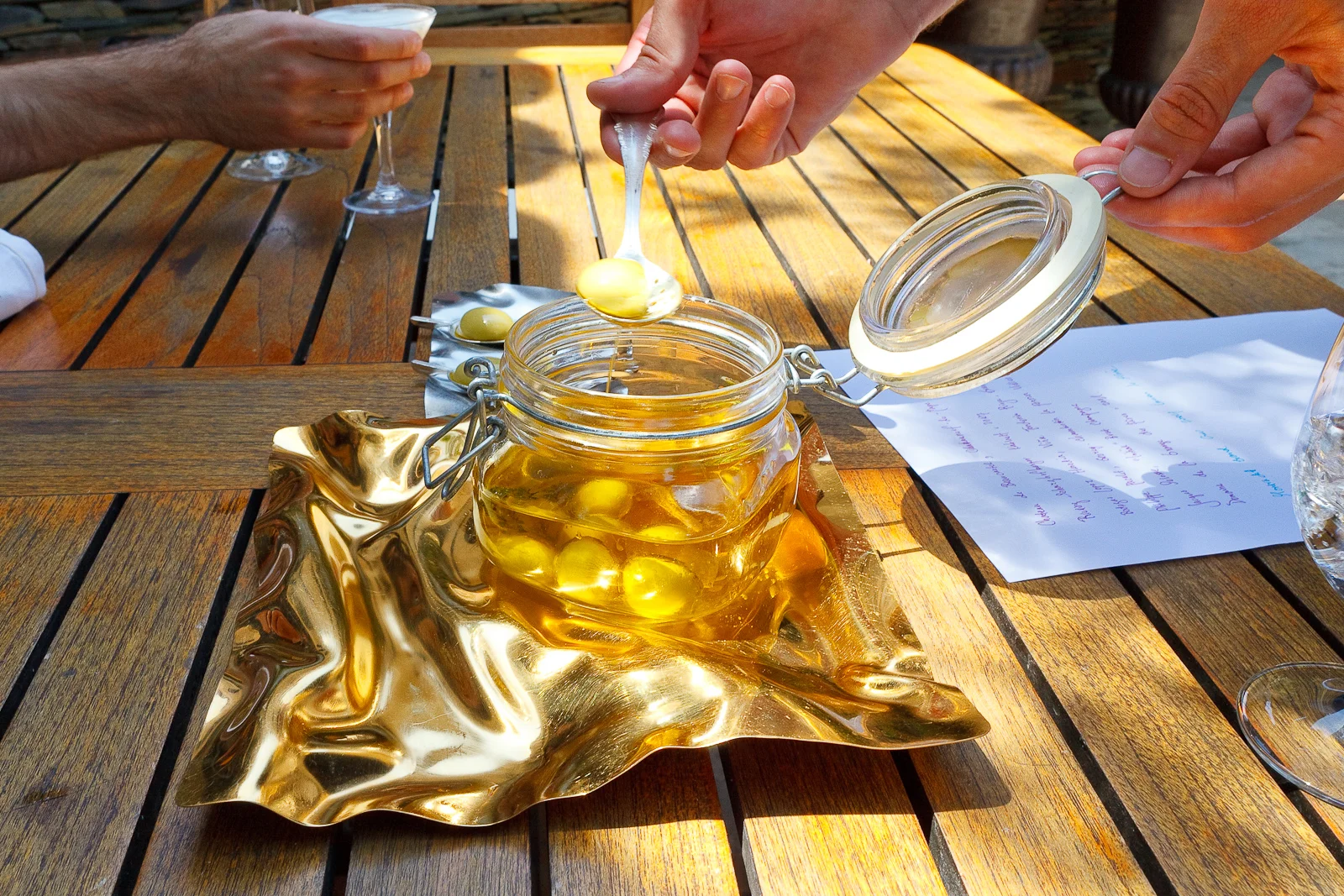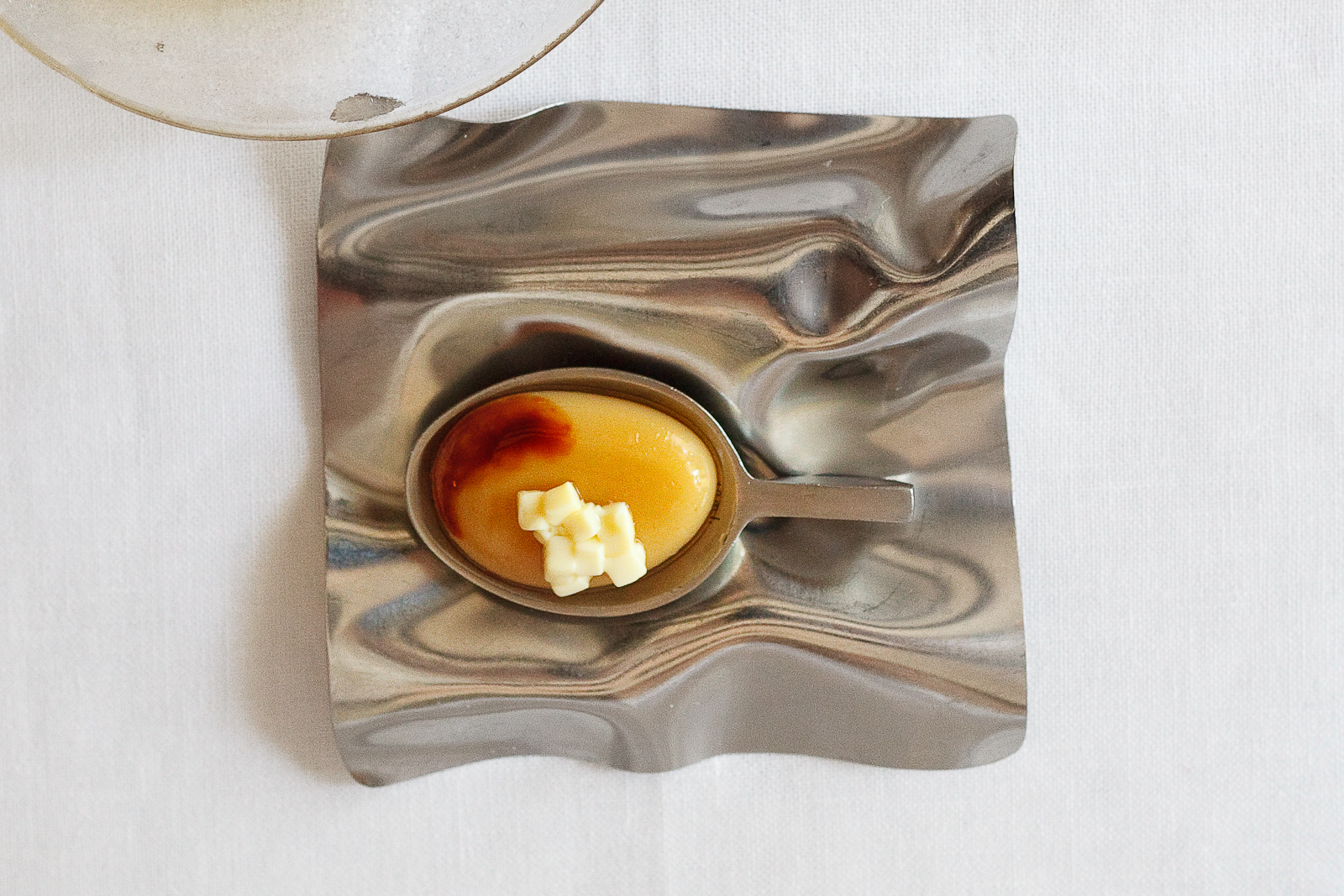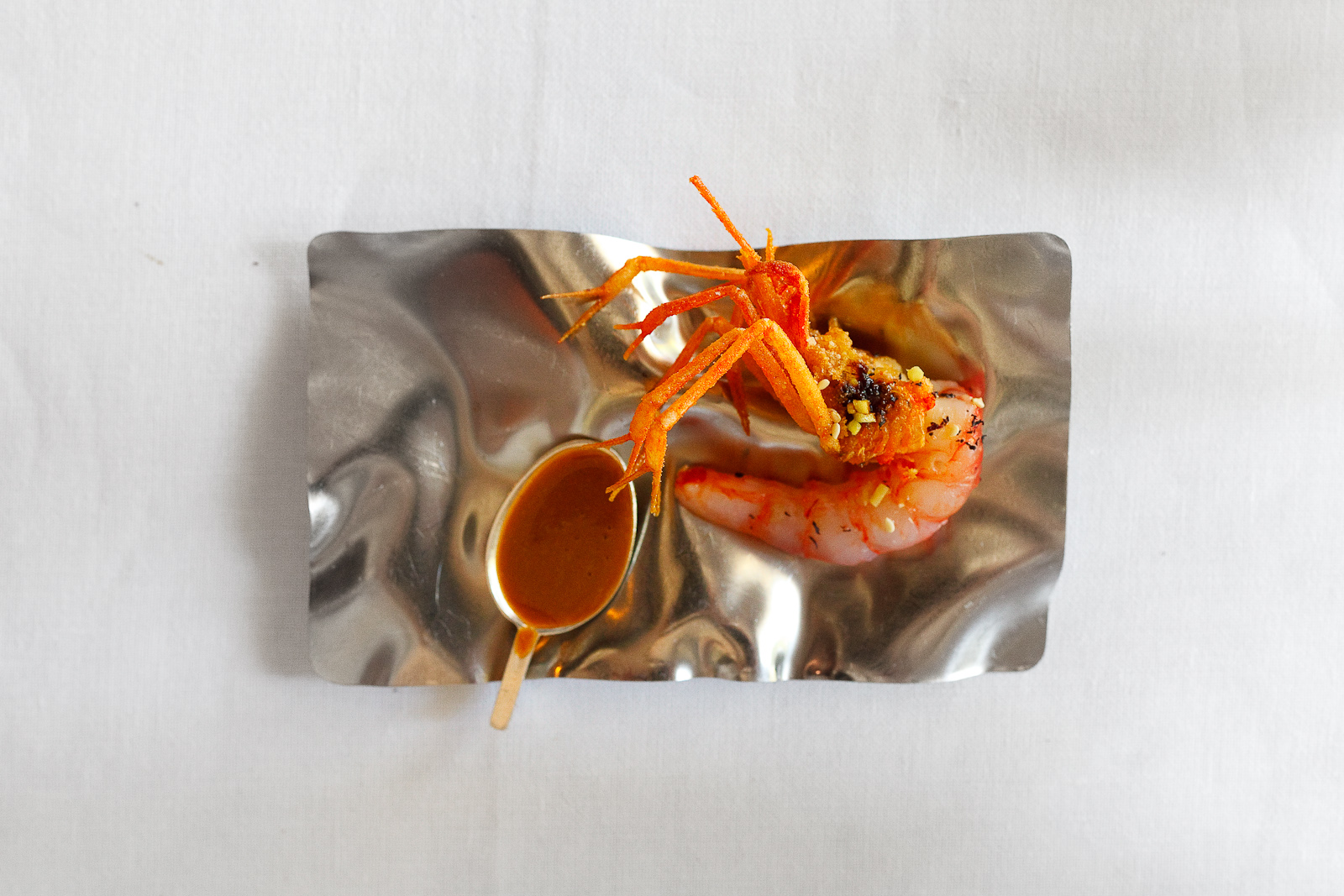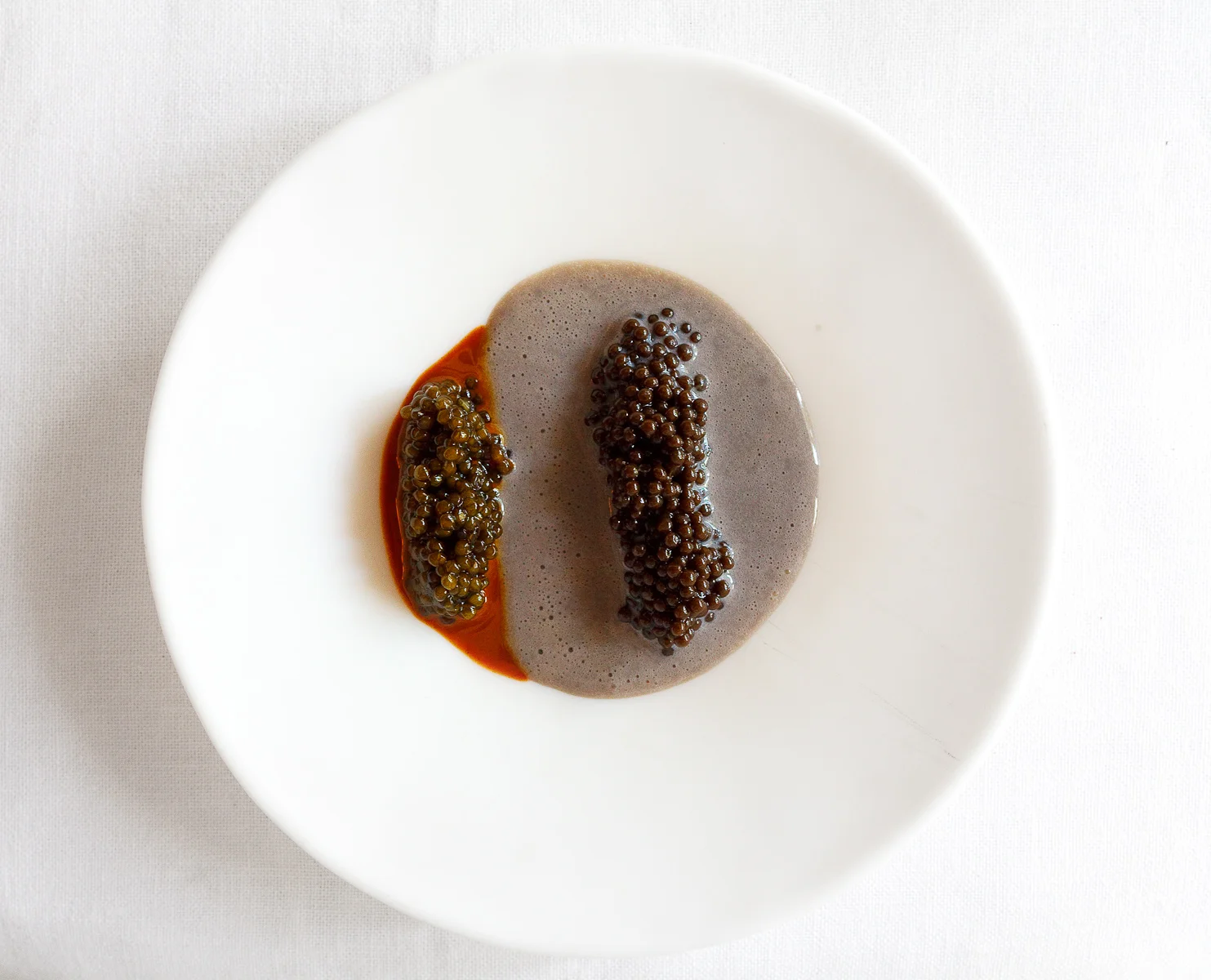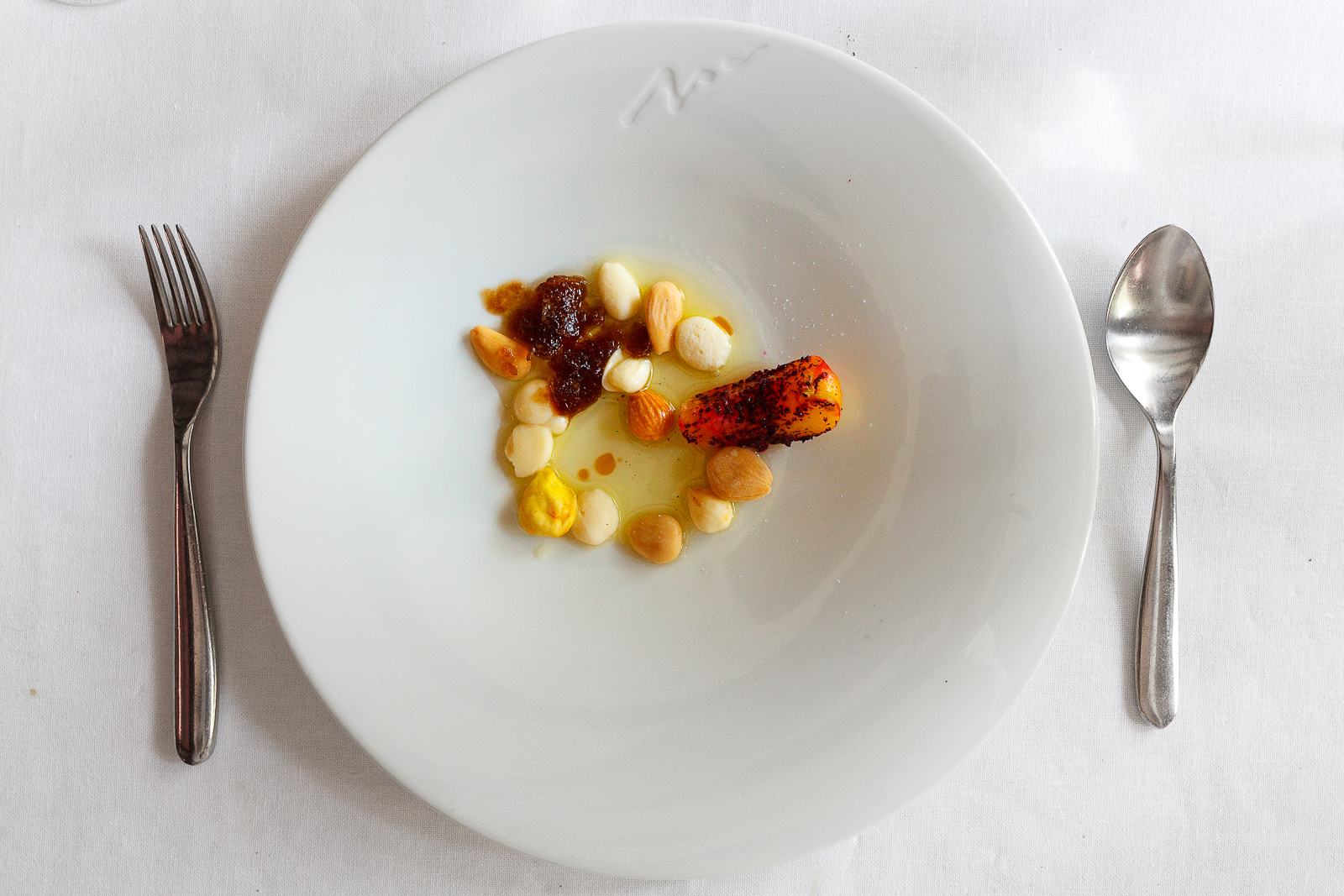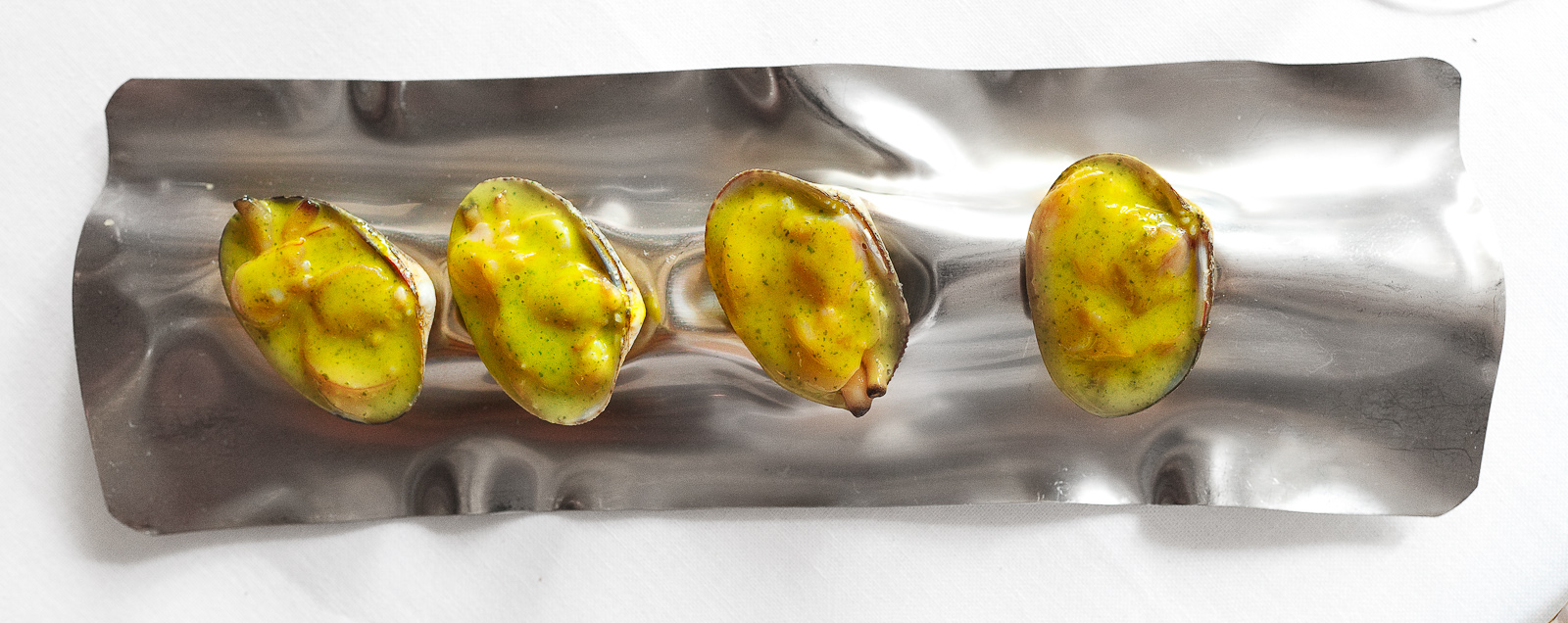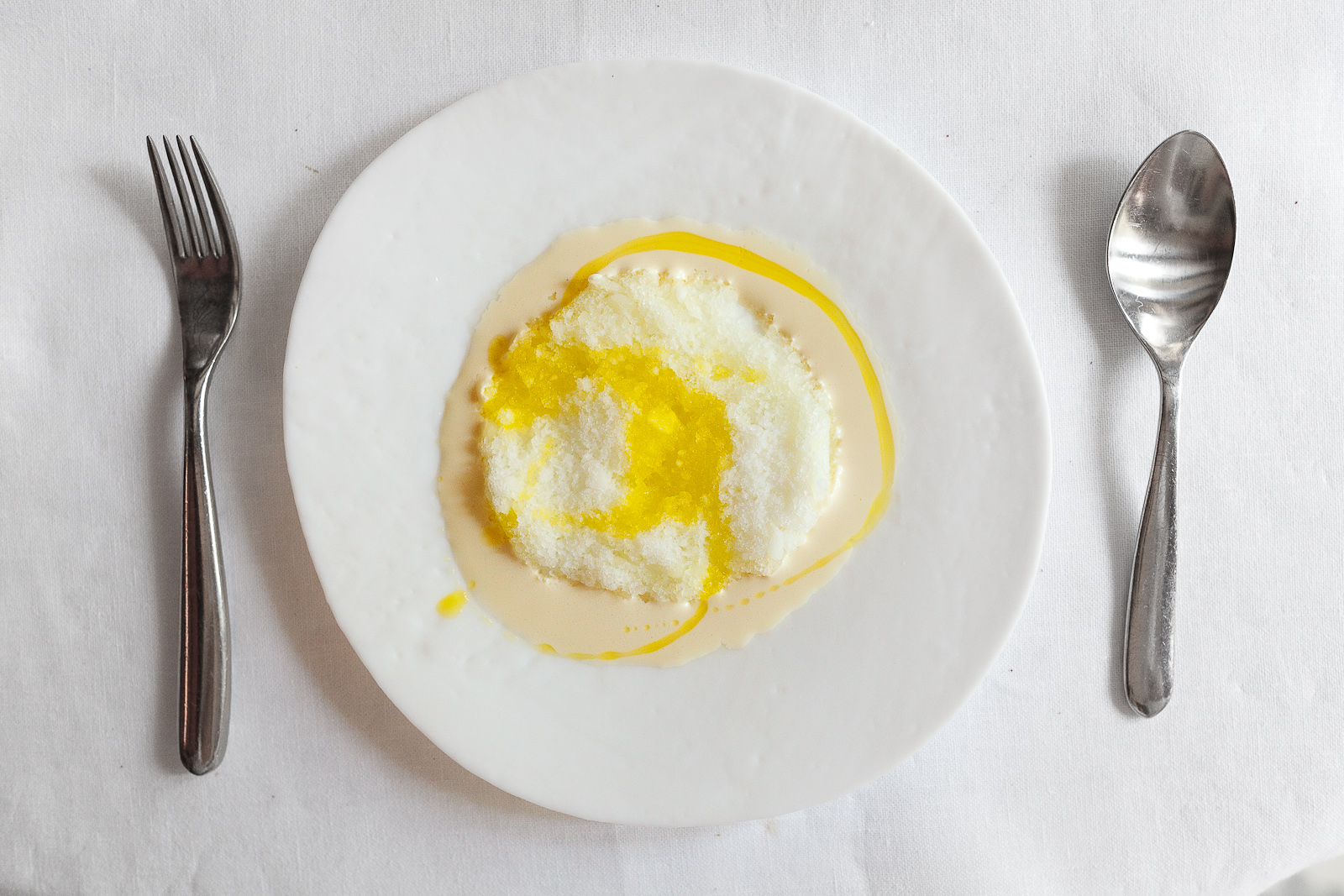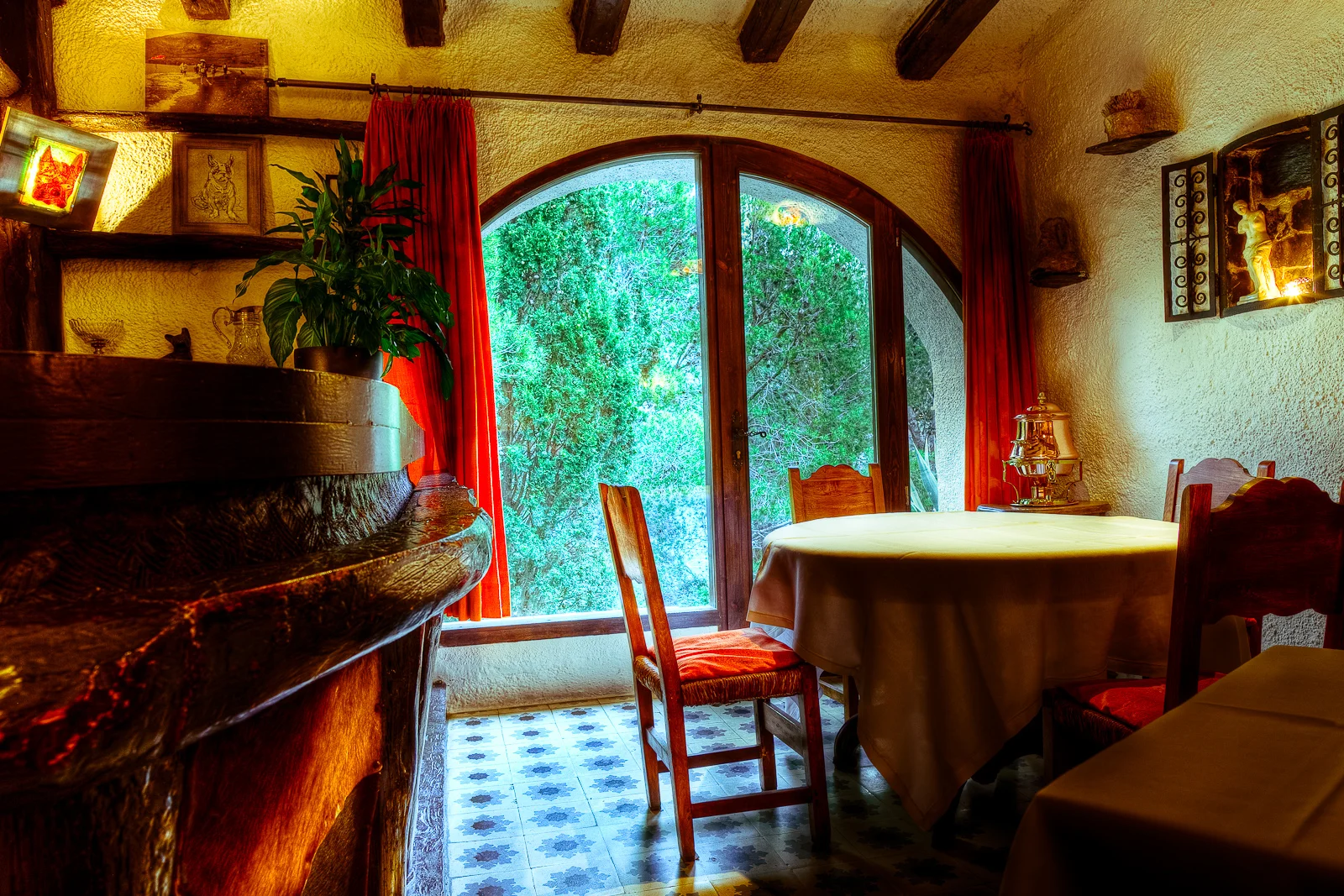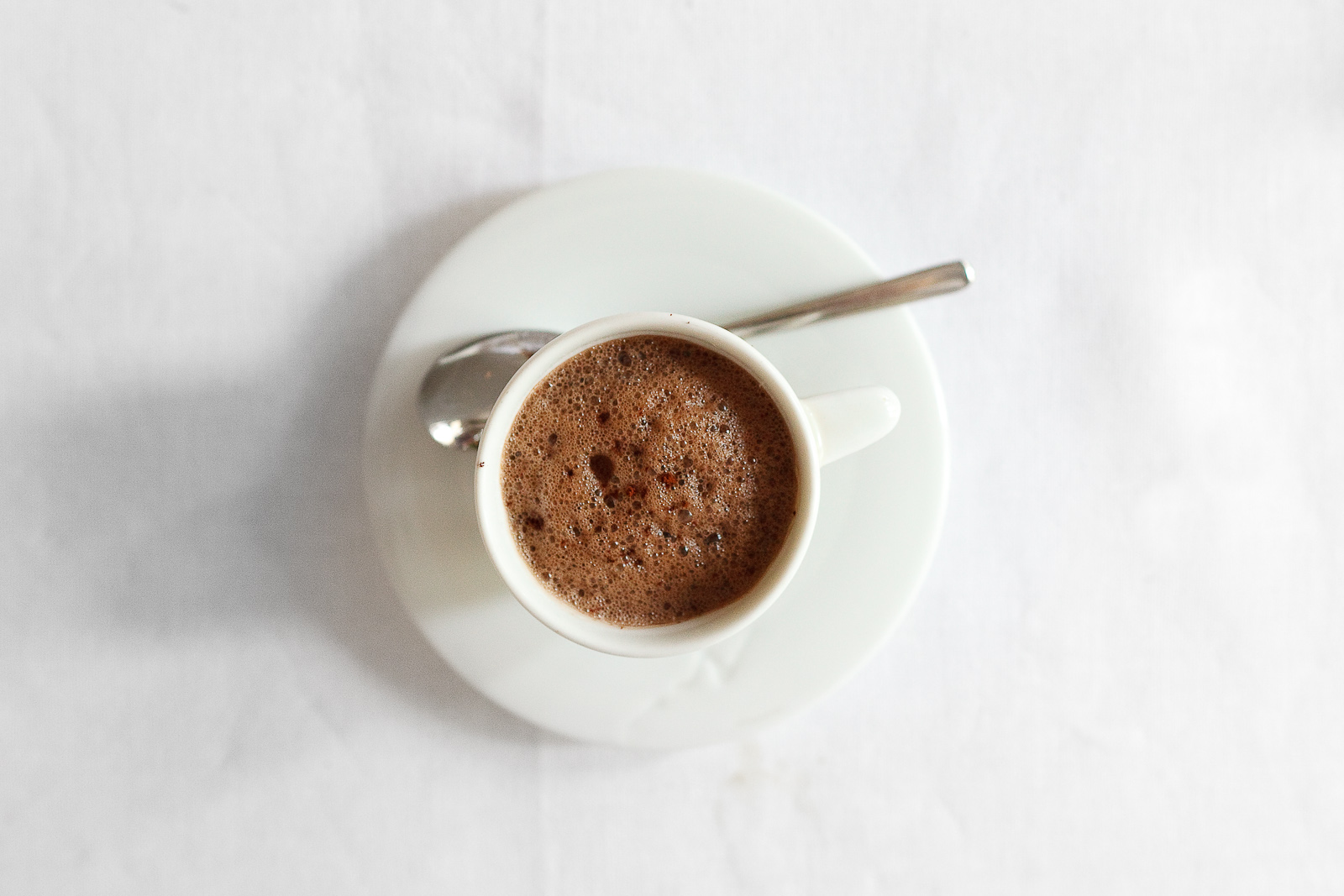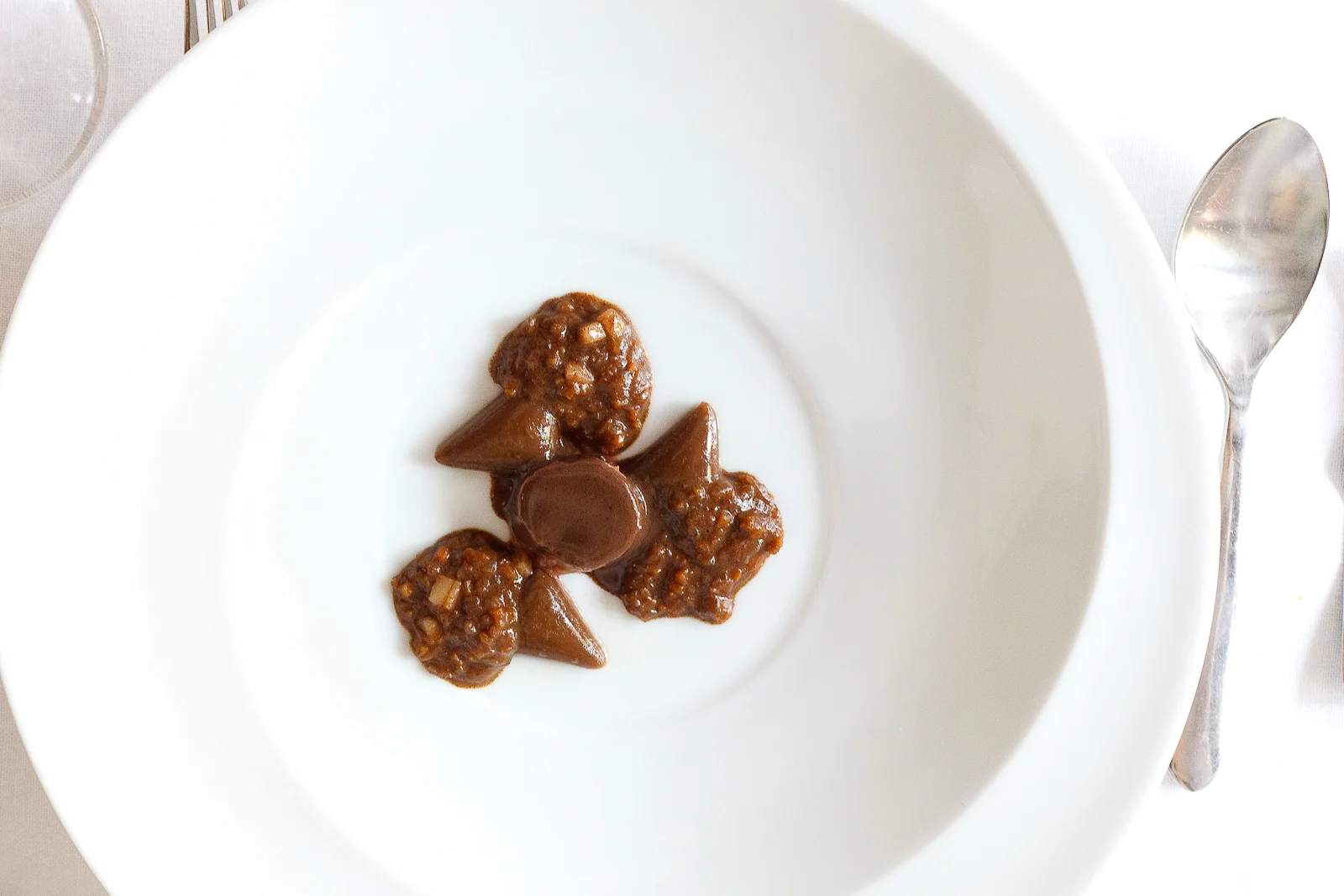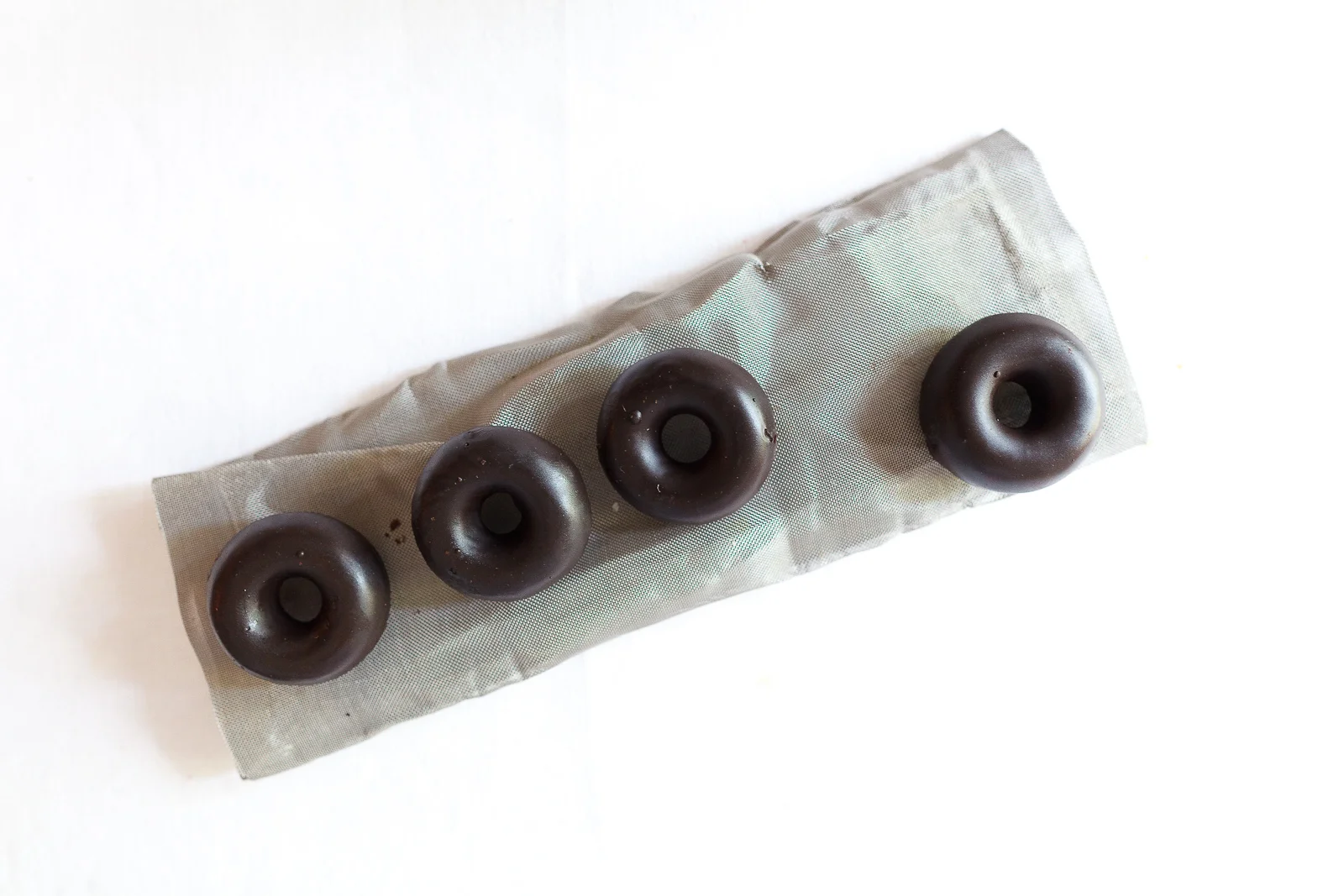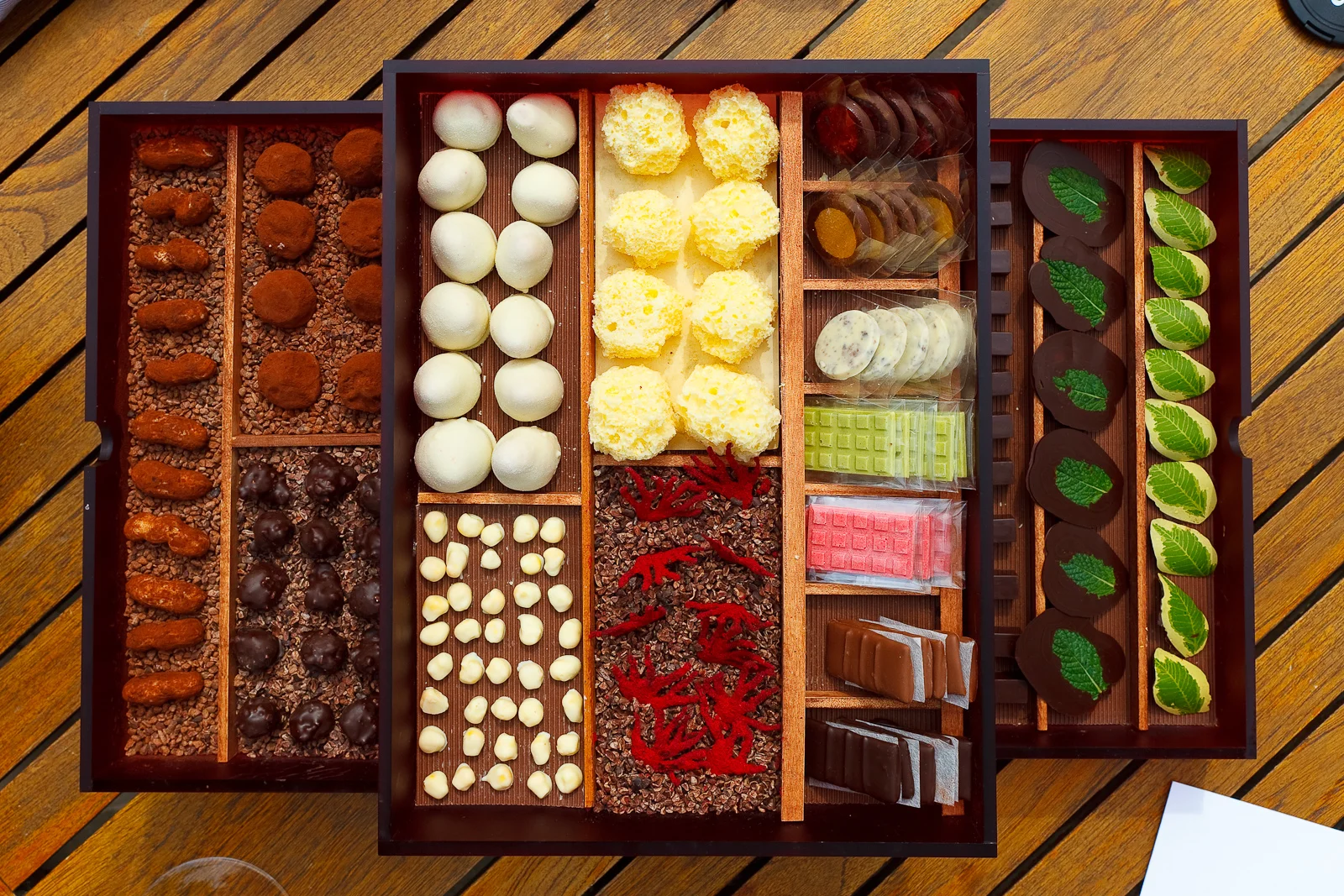El Bulli Revisited
My recent meal at El Bulli was the most fun I have ever had at a restaurant. I said the same thing last year because it was also true. My two meals at El Bullí have kept the table laughing, analyzing, discussing, and chatting in a way I haven’t seen elsewhere. Our experience was both intellectually stimulating and novel. There were flavor combinations I had never tasted before. We were kept on our toes throughout the entire lunch. It started as a lazy morning. Waves crashed and fizzled on the sun-drenched shore as we drank tea and coffee at our seaside hotel in Roses. Lunch at El Bullí was the only activity on the day's agenda. Unlike last year where we (embarrassingly) overestimated the Costa Brava's formality, this time, we left our suits and ties at home. At one o'clock we would casually drive no more than ten minutes to our lunch. We were ready, but in no hurry.
El Bulli, Spain - Drive to Cala Montjoi
When we did arrive, closed gates greeted us blocking a line of cars with their windows shut and air conditioners on max. It was 1:28pm, two minutes before the pearly gates invited one of the last groups of diners inside before the restaurant closes permanently. Two minutes later they opened. As we entered, we walked down the steep winding driveway onto dusty gravel -- a subtle reminder that most of what we'd be eating did originally come from the earth.
At the entrance of the restaurant lies a long glowing corridor illuminated by the large windows peaking into the courtyard. At the other end stands Luís García, the man who decides the fate of one million diners for one of the season's eight thousand seats. He is the gatekeeper, and once again, he let us in.
Mr. Garcia checked our names on the day's reservation list and introduced us to our waiter who would chaperon us through the kitchen. Once in the kitchen, it seemed we weren't the only ones who wanted a photo of Chef Ferran Adrià. Shutter clicks and flashes went off in rapid succession complementing the tinny clanking of cookware against the stove and counter. The kitchen felt more full than last year with diners capturing as much as possible of the kitchen's final two weeks in operation. But despite the busyness Chef Adrià made time to introduce himself and to speak with every diner before the meal.
After our kitchen tour we were led to the terrace for an apéritif before our meal.
We sat in the shade at an over-sized table with a view of the Cala Montjoi cove. The echos of children playing at the adjacent beach filled the terrace. We leisurely flipped through the modified wine list -- significantly shorter due to the restaurant's closing -- while enjoying the ocean breeze and framed views of the Mediterranean.
As we settled in and narrowed down our wine selection, our waiter brought us some snacks.
Caipirinha sugar cane - Fat stalks of sugar cane soaked in cachaça, rum and lime and garnished with small mint leaves. This was a chewable cocktail. While my friends took the chew and extract approach, I ate the entire stick at once. At the end of the course, however, we all had a plate of dry and stringy bamboo. The taste of alcohol was strong, and the raw sugar cane added a hint of maple to the snack. These boozy stalks put everyone in a good mood.
Gin fizz - A frozen lemon and gin slush topped with hot lemon and gin foam. The hot foam floated atop the slurry mixing with the cold beverage at exactly the point when it hits the mouth. This dish, not unlike Heston Blumenthal's hot-cold tea, danced in the mouth as the hot and cold beverages found equilibrium. This dish was sweet and acidic with the strong taste of lemon.
Mojito and apple baguette - A delicate and crispy apple meringue sandwiching a frozen mojito gel. This was so light and airy that any pressure while picking this up would cause it to crumble. This was very sweet, as mojitos should be, with the cool flavor of mint and the acidic bite of lime. By this point in the meal, we had all had our share of gin and rum, and were beginning to feel the subtle effects. Our smiles grew larger.
Spherical olives - Green olives "redesigned" to taste better than the real thing. This El Bulli classic is often used as an example for spherification, a technique invented by Chef Adrià where a liquid is shaped into a sphere, causing it to burst in the mouth. The concentrated flavor of olive made these taste better than the real things. The liquid olive "popped" in our mouths spilling a tart juice. These were delicious.
Pistachio ravioli - Sachets of sweet pistachio cream in dissolving rice paper dusted with powdered sugar. The taste of toasted pistachio was very strong; if I had to guess I'd say the pistachio shells were ground into a powder and added to the cream fortify the flavor. One or two whole pistachios were placed inside. The crispy rice paper against the gritty pistachio liquid added some textural contrast. I really liked these.
Mimetic peanuts - A cold crunchy shell in the shape of a peanut filled with a thin peanut cream. The sugary shell melted in the mouth blending with the peanut liquid. By this point in the meal I worried about the sweetness of the courses to come. Everything so far, with the exception of the olives, had been very sweet. But this course was the last.
Parmesan cheese "porra" - A crispy stick of parmesan wrapped in a translucent sheet of parmesan. The salty cheese had an almost meaty flavor which contrasted nicely against the sweetness of the previous courses. It also went very nicely with our glass of cava.
Parmesan "macaron" - Continuing with the cheese theme, we were given a loose marshmallow-like parmesan sandwich with the strong taste and smell of parmesan cheese. There was no detectable sugar in this dish; it was entirely savory. Coating the outside of this macaron was a parmesan crumble, much lighter and fluffier than the real thing.
What seemed to go by in a flash turned out to be over an hour. Our waiter showed us to our table in the dining room. Unlike the last time, the dining room was completely full. Despite never opening officially for reservations this year, it seemed like the restaurant was making a strong effort to get as many diners in as possible before the permanent closing. The tone was more gregarious and lively than last year, when the dining room was only half full.
Gorgonzola balloon - A rather large sphere of frozen Gorgonzola cheese cracked and sprinkled with nutmeg. The flavor was more concentrated than last year making it taste much better. There was a critical mass required for a broken-off piece of the sphere to taste good. Anything smaller than a silver dollar melted into a watery, anything larger had just the right cheese flavor. The sweetness of the nutmeg picked up the cheesiness of the sphere with a subtle spice. I didn't like this last time. I loved it this time.
Olive oil chip - A thin transparent circular wafer of room temperature solidified olive oil. This was drizzled with additional olive oil and a few specks of sea salt. The natural sweetness of the oil came through with each crunch.
Flowers Paper - A pressed sheet of cotton candy with a colorful bouquet of pressed flowers presented in a folded sheet of Japanese threaded paper. Some of the flowers were pickled, others raw. All of them were colorful. This dish was gorgeous but didn't taste great. It was, however, a brilliant presentation, and the cotton candy served as a fantastic vehicle for tasting flowers that would normally be used only for decorative purposes.
Boiled Shrimp - A local raw shrimp with the head and tail left on, quickly blanched in saltwater then held from the tail to allow the head to continue cooking a bit longer. This was simple and absolutely delicious. When sucked, the head of the shrimp spilled the salty viscous brain. This dish shows that Chef Adria knows when to take a step back and let nature shine on its own.
Soy Crystal - Flakes of ice with soy sauce and wasabi. The soy sauce seemed a bit thicker and sweeter, like tamari. What was really interesting about this course was how it reacted with the previous boiled shrimp. This dish was an abstraction of Japanese flavors, which in combination with the previous course, left behind a flavor combination similar to just having finished a bite of shrimp sashimi. The icy soy crystals were by no means delicious, but it was quite clever. It set the tone for the next few courses: we were taking a trip to Japan.
Japanese ravioli - Spherified miso soup garnished with small cubes of tofu. The miso soup bursted in the mouth spilling its warm dashi broth. The skin of the ravioli mixed with the tofu creating a bit of texture inside a thin broth. Once in the mouth, this was indistinguishable from traditional miso soup.
Soy matches - Soy sticks with a gold leaf flint. The gold leaf in this dish was not superfluous. The smoky fermented taste of the soy with the metallic gold made this taste similar to how a recently struck match smells. This was genius.
Nori ravioli with lemon - Crunchy nori ravioli on a bed of sesame seeds filled with lemon. This dish was sour, but somehow the salty seaweed countered the lemon's acidity making it taste rather balanced. The seaweed's umami enhanced the citrus flavor making it taste less sour and more sweet without additional sugar. This was really clever.
Two cooking prawn - Our expedition into the flavors of Japanese cuisine ended in a similar way to how it began: a shrimp. This shrimp had its head removed and the contents of it reduced onto a teaspoon. The legs were deep fried and the tail very lightly cooked in saltwater. When eaten the sweet and smooth shrimp contrasted against the salty and crunchy legs. The teaspoon chaser of enriched shrimp brains was pure and delicious.
Roses and artichokes - Boiled rose petals shaped to look like an artichoke. The "heart" of the artichoke was dressed with an artichoke reduction. The silver in this dish, while mostly cosmetic, did add a subtle minerality. There was a very strong floral taste. Ferran's grandmother, from what I was explained last year, used to serve artichokes on silver plates and once in awhile a piece of silver would flake onto the food. This dish was a nostalgic tribute to Chef Adrià's grandmother. It also really tasted like artichoke.
Ham and ginger canapé - A wedge of fat from Joselito ham atop a dried ginger chip. The fat had a texture indistinguishable from bone marrow. The spice of the ginger helped reduce the fatty mouthfeel of the ham a tiny bit, but more importantly it complimented the sweet and cured flavor of the ham. This was too rich for me. I felt like I was eating a chunk of melting butter.
Oysters and bone marrow tartar - This was an unforgettable course, both delicious and brilliant. Two raw oyster leaves served alongside cubed bone marrow in an oyster shell. In this dish, the green leaves bring the salty brine of the ocean while the fatty lobes of bone marrow the oyster meat. When eaten together, the flavor profile is almost indistinguishable from a perfectly cooked oyster. This was awesome.
At this point in the meal we finished our Jacques Selosse Initial and ordered a second bottle of wine, a Corton Charlemagne Grand Cru 2005, rife with apple and notes of butter popcorn.
Parmesan frozen air with museli - Chilled parmesan froth in a styrofoam box topped with dried raspberry, rosemary, and apple. The Styrofoam box was wrapped with a long strip of paper showing an abstract photo of dried parmesan cheese. The box was reminiscent of an airplane snack pack. Our waitress instructed us to try a bit first, then to evenly distribute the dried fruits to prevent them from weighing down the foam, and to try again. The foam had an intense salty flavor of parmesan. The flavor was even meaty, as the aged cheese's umami qualities came through. The tart dried fruits contrasted against the salt adding a balanced flavor and textural contrast. At the bottom of the box was a layer of parmesan ices. The box housed a gradient of chilled parmesan from light and fluffy foam to dense and frozen ices. This dish was delicious.
While we ate this course our waitress carefully rolled up the box's paper wrapper which also served as a take-home souvenir.
Carbonara tagliatelle - Consommé solidified and shaped like pasta with egg yolk, ham, black pepper, and parmesan. The alginated stock had a jello-like texture, and the thick egg yolk coated its surface alongside the smokey ham and crushed pepper. This tasted just like taglitelle carbonara -- perhaps even better than the real thing -- the only difference being the softer texture of the artifificial pasta. This was a great course.
Caviar cream with hazelnut sauce - Serguva caviar in a hazelnut cream opposed by spherified hazelnut beads in a caviar cream sauce. The hazelnut beads at first glance looked more real than the caviar, but when examined closely nothing mimics the genuine pearly glow around the real caviar. Each side of this dish, when its components were eaten together, was supposed to taste like the other. Even the temperatures contrasted: the caviar sauce was chilled and the hazelnut sauce warm; the caviar was chilled and the hazelnut beads were warm. This was a really nice concept, potentially one of the highlight courses of the afternoon.
Liquid hazelnut "porra" - A stick of hazelnut filled with liquid "nutella." This was sweet, crispy, and nutty.
Pinenuts shabu-shabu - Three variations of pine nut dipped into a dashi broth to soften the edible packet and eaten. One packet was oily, another creamy, and the third pasty. Each presented the flavor of pine nut from a different angle. This was a course that I didn't understand conceptually, but appreciated because it tasted so good!
Curry chicken - Curry ice cream, frozen curry granita, unsweetened coconut milk, spring onions, and a drizzle of chicken demiglace. This was the first time I had tasted Chef Adrià's use of curry, and my god does he know how to use it. I generally shy away from curry because of its dominating assertive flavor. Tumeric is such a strong tasting ingredient that it often overshadows all the other elements on the plate. Here the curry was the dominant element on the plate. Making curry the primary ingredient and using the chicken only as a flavor enhancer was particularly interesting as the curry itself developed a meaty flavor. This course was outstanding.
Mimetic almond - A mixture of real and spherified almonds, almond ice cream, almond confiture, and a generous wedge of peach in a tomato broth. In this dish Chef Adrià deconstructs each component of a toasted almond: saltiness, crunchiness, toastiness and inherent sweetness and re-creates the single component in an almond shape so that when the whole dish is eaten together it tastes like the real thing. This was an intellectual snack that was also delicious.
Cold sea anemone with barnacles - Local gooseneck barnacles (percebes) with anemones. This dish tasted like licking a wooden dock submerged in saltwater. This was a dish where I didn't particularly like the flavor, but I fell in love with where it took me. For a second I was swimming in the Mediterranean without getting my feet wet.
Lulo "ceviche" and mollosk - Lulo is a Colombian tropical fruit somewhere between a passion fruit and tomato, with a distinct tartness. In this course a hollowed-out lulo is filled with coriander, lime, and onion forming a green puree as well as foamed clam juice. A small pellet of ice was added to the white wedges to chill the temperature of the clam juice. The white wedges also had small medallions of local clam. This was a fantastic course, both beautiful and refreshing. It was a welcome bright contrast to the murky briny broth from the previous course.
Clam "ceviche" - An open-faced shucked clam with a subtle scent of corn and cilantro. This little snack served as a segue-way into the next course.
Oaxaca "taco" - A tortilla made from dehydrated corn wrapped avocado, grapefruit, and greens. This vegetarian taco was sweet with a subtle kick of acidity from the citrus. The creaminess of the avocado held everything together. This was my favorite bite of the meal.
"Gazpacho" and ajo blanco - A powdered snow of gazpacho atop a white garlic cream, drizzled with olive oil. This dish shows us a bit of Chef Adrià's sense of humor. This desaturated dish lacks the characteristic red of traditional gazpacho. In fact, it looks nothing like it. This plate is a celebration of Chef's Adrià's creativity while demonstrating his ability to stay true to flavor. This was delicious!
Shanghai lobster - Lobster claws topped with small mushrooms, ginger, sesame seeds, star anise, and pork belly. The combination of the dish's ingredients -- particularly the ginger and sesame -- took me right to China where whole lobster claws are sauteed in this sweet/spicy combination waiting to be cracked and eaten. This was easier to eat, of course.
At this point in the meal we decided to take a break. We paused our service for fourty five minutes and headed out on the terrace to reflect on our experience thus far. Since the restaurant only does one service per day, we were in no rush to leave.
We were the only diners outside. The silence on the terrace was filled only by the Mediterranean wind.
After our break we returned to the table to resume service, just in time for the meat and dessert courses.
To set the stage for the next courses, we were given a cheesecloth bag of toasted cardamom. The spiced woodsy fragrance transported me to the winter, full of game meats, cranberries, and cinnamon.
Hare fritter - A liquid-filled deep-fried breaded hare dumpling topped with lemon zest. When eaten in one bite the gamey hare jus poured out and mixed with the starchy shell. This was delicious and very satisfying.
Hare cappuccino - A drinkable hare soup topped with hare foam.
Blackberry risotto with game meat sauce - A teaspoon filled with individually picked blackberry kernels and a game meat gravy. The tart blackberry against the fatty hare gravy was really balanced, similar to how Americans mix gravy and cranberry sauce during Thanksgiving. The astringency of the blackberry kernels tempered the fatty mouthfeel of the gravy. This was a tasty bite.
Hare ravioli with bolognese - This dish was paired with a wine glass of beet juice made to look like blood. When the glass was placed on the table it looked like red wine, but a quick swirl revealed this was more viscous. The "blood" coagulated along the sides of the glass revealing a deep magenta color. This was a very intense dish. The ravioli were creamy and gamey, highlighting a more classical side of Chef Adrià's cooking.
Wintery snow with yuzu and sweet beans - A nutty yet refreshing intermezzo with toasted sesame seeds.
Yuzu nigiri - Candied yuzu gelée atop a cloud of rice.
Yoghurt blini - A thin circular blini made from thickened yoghurt drizzled with honey. This tasted a lot like Greek yoghurt with a slightly crunchy shell.
Coca de vidre - crystal cake - Crispy sheets of sugar topped with pine nuts. The translucent sugar, though at room temperature, looked like ice crystals.
Mini-doughnuts - Unsweetened coconut donuts with unsweetened cocoa. The sugar from the crystal cake from the previous course somehow made these donuts taste sweet. They were phenominal -- just the pure taste of chocolate and liquid coconut filling.
Frozen sake - Sheets of sake ice topped with blackberry and raspberry flavored crispy candies. This dessert was cool, tart, and refreshing, without being too sweet.
Marking the end of our meal our friendly waiters posed for a quick photo. I had the same waitress during my meal last year; I wonder if this was an intentional match up as the waitress seemed to remember me, or if the wait staff is so small and the turnover so low, that it was a result of favorable probability.
After we finished our meal, our waitress invited us to have petits fours and coffee out on the terrace. We returned to a different table this time, one in the sun with a gentle sea breeze.
Petits Fours - A tremendous assortment of colorful chocolates, including yogurt covered dehydrated strawberries, chocolate-covered gooseberries, chocolate-covered mandarin wedges, strawberry dusted chocolate “corals,” and other bite-sized pieces. My favorite piece was the white chocolate covered strawberry. I liked how the tartness of the dehydrated strawberry tasted with the buttery flavor of the white chocolate.
Three hours later and the chocolates were still not finished. Since our table was in the sun, shortly after presenting the box to us our waiter brought it inside and continuously couriered small plates of chocolates -- small plate by plate -- to prevent them from melting. We were in no rush, and neither were they.
Amazingly there was not a single "gimmicky" course. There were no ingredients hanging from strings, no erupting volcanoes or smoke shows, everything was pure, focused, and apparently simple. Chef Adrià has a unique ability to make incredibly complex dishes seem simple.
El Bulli, Spain - Sunset Over Roses
But was it delicious? It sure was. Out of forty three courses there were only two that I didn't care for all that much (the ham and ginger canapé and soy crystal). And even with those two courses, my dining companions would disagree with me about the former and I'm quite confident pleasant flavor wasn't the intent of the later.
My biggest complaint last year (and believe me there weren't many) was the lack of cohesion between the courses: the meal seemed disconnected without a central theme linking them together. This year there was a story. Chef Adrià took us on a tour around the world with each course coming back to Catalonia as the crux. In many ways this final meal is an autobiography highlighting Chef Adrià's inspirations, from Japan to Latin America and back home to the Costa Brava.
I'm pretty sad that El Bullí will be permanently closing. It will always be remembered as a magical place where creativity and ingenuity meet flavor. It will always be a place where I had two of the best meals of my life.




